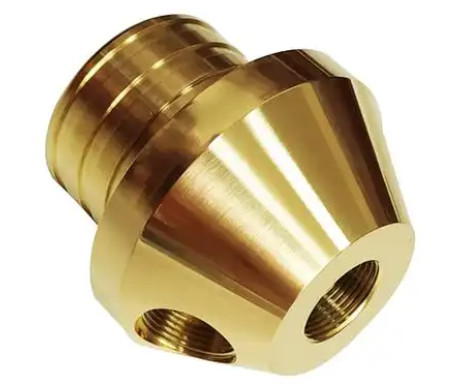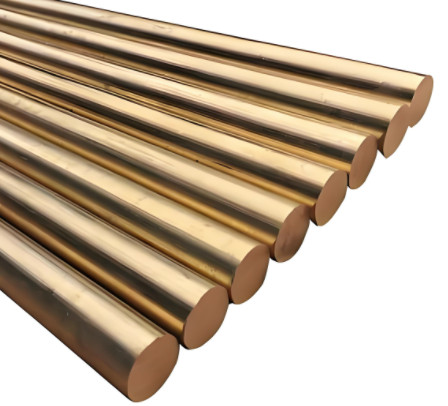C36000, also known as free-cutting brass, is a widely used copper-zinc alloy known for its excellent machinability and versatility in industrial applications. This guide provides a detailed examination of C36000, including its chemical composition, mechanical and physical properties, fabrication processes, and practical applications. The content is structured to offer technical insights for engineers, manufacturers, and material specialists, ensuring clarity and precision without speculative trends or overly artistic expressions.
Chemical Composition of C36000
The chemical makeup of C36000 defines its performance characteristics. This alloy is a leaded brass, optimized for machining due to the inclusion of lead, which enhances chip formation and reduces tool wear. The precise composition is standardized under ASTM B16 and other relevant specifications.
| Element | Percentage (%) | Role |
|---|---|---|
| Copper (Cu) | 60.0 - 63.0 | Primary component, provides corrosion resistance and conductivity |
| Zinc (Zn) | 35.5 - 39.0 | Enhances strength and ductility |
| Lead (Pb) | 2.5 - 3.7 | Improves machinability |
| Iron (Fe) | 0.35 max | Impurity, minimal impact |
| Others | 0.50 max | Trace elements, controlled to maintain alloy integrity |
The lead content is critical, as it forms soft, dispersed particles that facilitate cutting and reduce friction during machining. However, the presence of lead may raise considerations for applications requiring compliance with regulations like RoHS, where lead-free alternatives might be preferred.
Mechanical Properties
The mechanical properties of C36000 make it suitable for applications requiring strength, ductility, and ease of fabrication. These properties vary depending on the temper of the material, such as half-hard (H02) or soft (O60). Below are typical values for C36000 in the H02 temper, commonly used for machining.
| Property | Value | Unit |
|---|---|---|
| Tensile Strength | 400 - 500 | MPa |
| Yield Strength | 170 - 310 | MPa |
| Elongation | 10 - 25 | % |
| Hardness | 75 - 90 | HRB (Rockwell B) |
| Shear Strength | 260 - 300 | MPa |
These values indicate that C36000 offers a balance of strength and ductility, making it ideal for components that undergo moderate stress. The alloy’s machinability rating is approximately 100%, the highest among copper alloys, due to its lead content and fine microstructure.
Physical Properties
The physical properties of C36000 contribute to its suitability for specific environments and applications. These include thermal and electrical conductivity, density, and corrosion resistance.
- Density: 8.49 g/cm³, slightly denser than pure copper due to zinc and lead additions.
- Thermal Conductivity: 115 W/(m·K) at 20°C, sufficient for heat dissipation in electrical components.
- Electrical Conductivity: 26% IACS (International Annealed Copper Standard), adequate for low-current applications.
- Melting Point: Approximately 885°C, allowing for casting and hot forming processes.
- Coefficient of Thermal Expansion: 20.5 µm/(m·K) from 20-300°C, relevant for applications involving temperature fluctuations.
C36000 exhibits good corrosion resistance in neutral or slightly acidic environments but may corrode in highly acidic or saline conditions. Protective coatings or platings are recommended for such environments.
Fabrication Processes
C36000 is prized for its ease of fabrication, particularly in machining, but it also supports other processes like forming, soldering, and plating. Below is a detailed breakdown of its fabrication characteristics.
Machining
C36000 is the benchmark for machinability among metals. Its lead content ensures short, brittle chips, reducing tool wear and enabling high-speed machining. Typical machining operations include turning, drilling, milling, and threading. Recommended parameters include:
- Cutting Speed: 90-120 m/min for high-speed steel tools.
- Feed Rate: 0.05-0.2 mm/rev for turning.
- Tool Material: Carbide or high-speed steel, with minimal rake angle for optimal chip control.
Machining C36000 requires minimal lubrication due to its self-lubricating properties from lead.
Forming
C36000 can be cold-formed to a moderate degree, particularly in softer tempers (e.g., O60). Common forming processes include bending, stamping, and drawing. However, excessive cold working may lead to cracking due to the alloy’s moderate ductility.
Joining
Soldering and brazing are highly effective for C36000, with excellent wettability. Welding is less common due to lead vaporization risks, but resistance welding is feasible with proper ventilation. Adhesive bonding is also viable for non-structural applications.
Surface Finishing
C36000 accepts various surface treatments, including electroplating (e.g., nickel, tin), polishing, and coating. Its smooth surface after machining reduces preparation time for finishing.
Applications of C36000
C36000’s combination of machinability, strength, and corrosion resistance makes it a preferred material in numerous industries. Key applications include:
- Plumbing Fittings: Valves, faucets, and connectors benefit from C36000’s corrosion resistance and ease of threading.
- Electrical Components: Terminals, connectors, and switchgear leverage its moderate electrical conductivity and machinability.
- Automotive Parts: Bushings, fittings, and fasteners use C36000 for its durability and precision.
- Industrial Hardware: Screws, bolts, and nuts are commonly made from C36000 due to its high machinability.
- Instrumentation: Precision components in gauges and meters utilize C36000 for its dimensional stability.
While C36000 is versatile, its lead content may pose limitations in applications requiring lead-free compliance, such as potable water systems or food-grade equipment. In such cases, alloys like C36500 or C38500 may be considered as alternatives.
Considerations for Using C36000
While C36000 is highly versatile, certain factors must be evaluated to ensure optimal performance:
- Regulatory Compliance: The lead content in C36000 may restrict its use in applications governed by environmental or health regulations, such as RoHS or NSF/ANSI 61 for drinking water components.
- Corrosion Sensitivity: Exposure to aggressive environments, such as marine or highly acidic conditions, may require additional protective measures like coatings.
- Temperature Limitations: C36000 maintains its properties up to approximately 150°C. Beyond this, strength and hardness may degrade, necessitating alternative alloys for high-temperature applications.
These considerations ensure that C36000 is selected appropriately for specific use cases, balancing its advantages with potential constraints.
Comparison with Other Brass Alloys
C36000 is often compared to other brass alloys like C26000 (cartridge brass) and C37700 (forging brass). Unlike C26000, which has higher ductility but lower machinability, C36000 excels in precision machining. C37700, optimized for hot forging, lacks the machinability of C36000 but offers better formability. The choice between these alloys depends on the specific requirements of the application, such as machining precision versus formability.

Conclusion
C36000 brass alloy is a cornerstone material in industries requiring high machinability, moderate strength, and good corrosion resistance. Its leaded composition enables unparalleled machining performance, making it ideal for precision components in plumbing, electrical, automotive, and industrial applications. By understanding its composition, properties, fabrication methods, and limitations, manufacturers can make informed decisions to optimize performance and compliance. This guide provides a systematic overview to support engineers and professionals in leveraging C36000 effectively.
